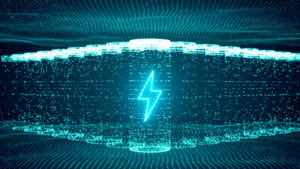By Jackie Velazquez, Director of Environmental Compliance at Encamp
 As technology advances and businesses search for energy independence, the need for lead-acid and lithium-ion batteries has grown. However, this boost in popularity has also left many EHS professionals scrambling to comply with SDS and Tier II reporting requirements. Here, we’ll take a look at the growing market size of lead-acid and lithium-ion batteries, their role in sustainability, environmental impact, and complex reporting requirements.
As technology advances and businesses search for energy independence, the need for lead-acid and lithium-ion batteries has grown. However, this boost in popularity has also left many EHS professionals scrambling to comply with SDS and Tier II reporting requirements. Here, we’ll take a look at the growing market size of lead-acid and lithium-ion batteries, their role in sustainability, environmental impact, and complex reporting requirements.
The global lead-acid battery market is expected to reach over $63 Billion by 2028. The increasing need for uninterruptible power supplies and their affordability as a store of energy contribute to this continued growth. In addition, the global market size of lithium-ion batteries is expected to reach $135 Billion in 2031, with increasing demand from renewable energy, automotive manufacturing, and many more.
Environmental implications of lead-acid and lithium-ion batteries
While the growth of batteries has been good for consumers and businesses, the environmental impact is a significant issue. One of the main implications is that procuring the raw materials for lead-acid and lithium-ion batteries requires mining, often in underdeveloped nations. Due to how the materials in these batteries are extracted, good and compliant custody of these chemicals are needed, to make sure both do not play a significant role in adverse environmental impacts.
For example, lead-acid batteries are composed of lead plates submerged in sulfuric acid, both of which are considered toxic. Lead acid batteries also tend to break, leaking their electrolyte from their casing. When this happens, spills must be reported immediately to avoid any EPA violations.
The environmental impact of lithium-ion batteries is caused by the heavy metals they contain like cobalt, nickel, and manganese, which can be hazardous to people and the environment. Unfortunately, because recycling lithium-ion batteries is still so complex, many batteries used today have the likelihood of ending up in landfills in the coming years.
Lead-acid and lithium-ion batteries role in sustainability
Researchers are developing batteries that use less toxic, more readily available, and environmentally friendly materials to combat the potential environmental impact. However, creating such batteries is complicated because if they are less energy dense, they will face disposal sooner, which still carries a negative effect on the environment.
Lead-acid batteries are 99% recyclable, but recycling can often expose those involved to dangerous levels of lead when not managed properly. However, recycling is considered a net positive. The environmental risk is lower than sending them to a landfill because a single lead battery has the potential to affect the groundwater of an entire area.
In contrast to lead-acid batteries, lithium-ion batteries are only 5% recyclable. However, lithium-ion batteries are also relatively new to the market and have a longer life span. Therefore, as more lithium-ion batteries reach the end of their useful lives, the demand for recycling will likely lead to innovations. Thankfully, some companies have already begun investing in recycling technologies that produce similar efficiency rates as lead-acid batteries.
Compliance Reporting for Lead-acid and lithium-ion batteries
While reporting requirements largely depend on the location and quantities of chemicals on site, here are some expert-tested best practices to master compliance reporting for lead-acid and lithium-ion batteries.
Lead-acid Batteries
Once your facility meets the 1,000 pound Threshold Planning Quantity (TPQ) for sulfuric acid, you must submit a 302 report to your SERC and LEPC. These reporting deadlines will depend on state and local requirements.
When calculating the total quantity of sulfuric acid at a facility, you need the battery weight and what percentage of sulfuric acid it contains. This information is on the battery’s spec sheet and the SDS.
Also, it’s essential to know that if you have a leaking battery and over 1,000 pounds of sulfuric acid that has spilled outside your facility, you must notify the SERC, LEPC, and National Response Center.
Lithium-ion Batteries
Under EPCRA Section 311(e), some lithium-ion batteries are exempt from Tier II reporting if the batteries are used by the general public. However, other large, commercial batteries, like those found in industrial forklifts, are not exempt and must be included in a Tier II report.
Because they do not contain an extremely hazardous substance, the EPA threshold for lithium-ion batteries is 10,000 pounds at the federal level. However, state and local regulations on reporting may differ depending on your facility’s location.
As the world moves away from fossil fuels and toward renewable and clean energy sources, the use of lead-acid and lithium-ion batteries will continue to grow. While this shift has many benefits, it also presents new challenges for people, the environment, and compliance professionals.
Accurate Tier II reporting of lithium-ion batteries is critical to ensuring your organization benefits from this technological shift without causing unnecessary damage to your community and the environment. Join EHS and regulatory compliance leaders for the highly-anticipated Mastering Compliance Reporting for Lithium-Ion Batteries virtual event this November 9th at 2PM ET to learn how to report and stay in compliance like a pro.
How Encamp can help
EHS professionals who don’t want to fall out of compliance with the ever-changing regulatory landscape must start educating themselves now to stay ahead of the curve. Encamp can help you and your team achieve, and maintain, such visibility by tracking and centralizing compliance data from all facilities, validating it for accuracy, and even automating EPCRA Tier II reports to all of your required jurisdictions.
